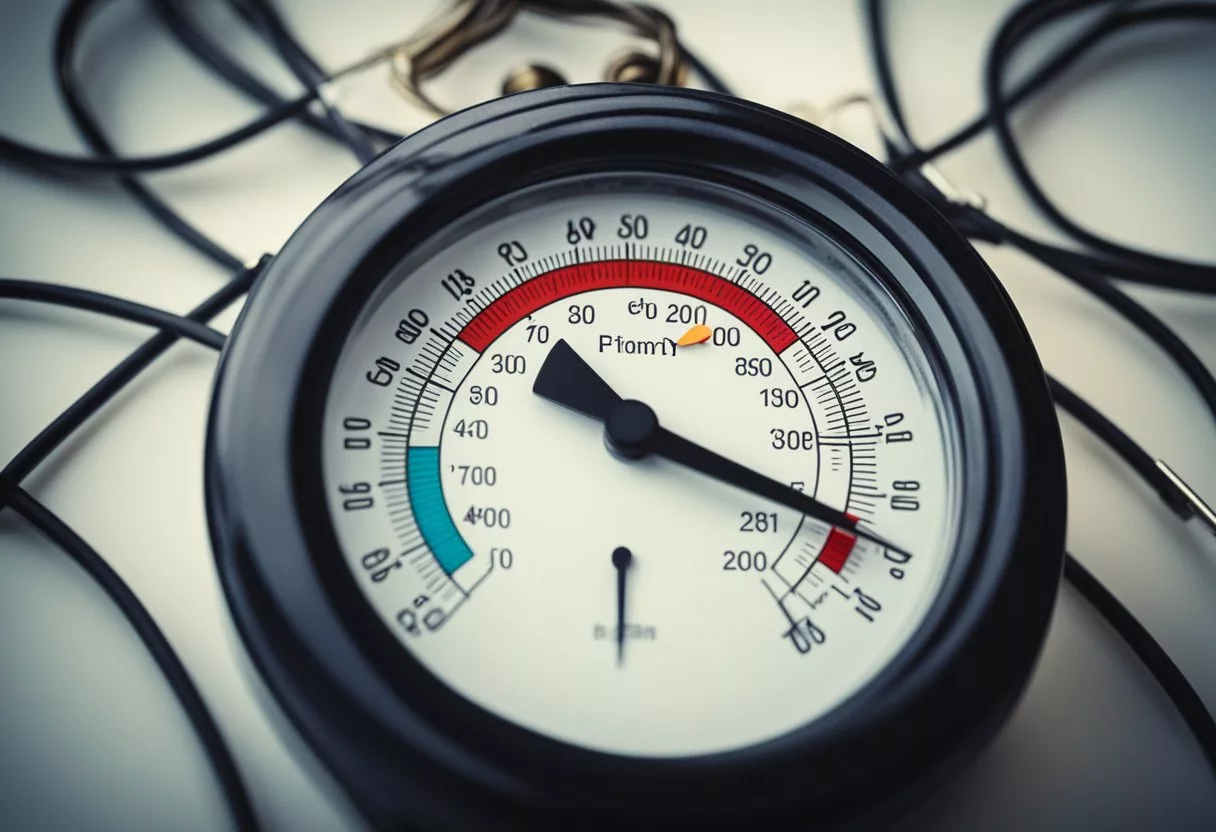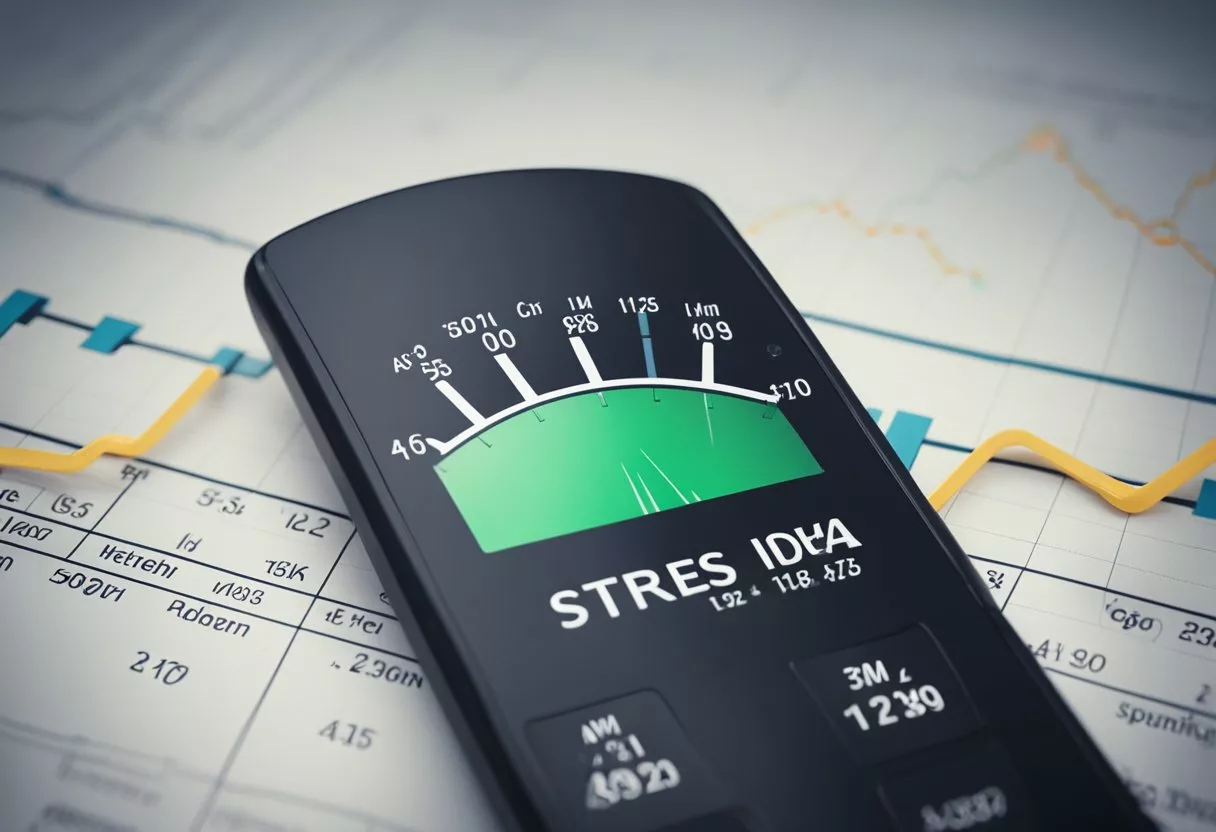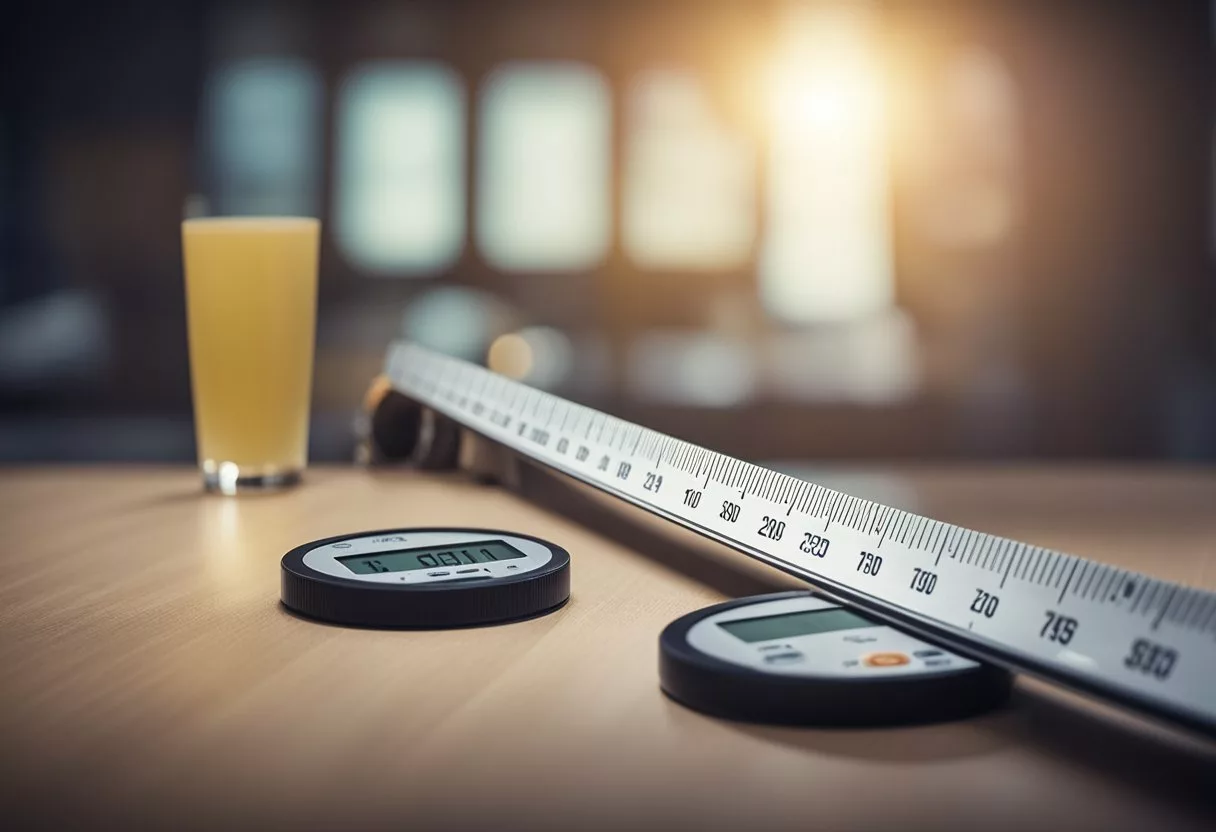Assessing stress levels has become a crucial element in maintaining overall health and well-being. Stress can have far-reaching effects on both mental and physical health, so recognizing and quantifying stress is the first step towards managing it effectively. Advances in research and technology have provided various methods to monitor stress indicators, including psychological self-assessment tools and physiological measurements.

Methods of measuring stress range from questionnaires designed to gauge perceived stress to more objective tests that monitor biological markers, such as heart rate or hormone levels. Understanding which stress measurement tools are reliable and accessible can empower individuals to monitor their stress responses and thereby improve their health management strategies. By taking control of one's ability to measure stress, it becomes possible to take proactive measures to reduce stress and its potential negative impact on health.
Key Takeaways
- Stress levels can be measured through both subjective and objective methods.
- Quantifying stress is important in both understanding and managing its health impacts.
- Technology and research offer various tools for monitoring personal stress levels.
Understanding Stress

Before delving into the specifics of measuring stress, it's critical to grasp what stress is and how it manifests itself. By identifying stress and its common sources, one can take the first step toward effective management.
Defining Stress
Stress refers to the body's reaction to events that make an individual feel threatened or upset in some way. This reaction is known as the stress response, or "fight-or-flight," which prepares the body to face or flee from the perceived threat.
- Health: Chronic stress can harm one's health, potentially impacting various bodily systems and contributing to a range of health issues.
- What is Stress: It's a physiological and psychological response to events that are perceived as challenging or threatening to a person's well-being.
Stress can prompt physical reactions such as increased heart rate and blood pressure, quickened breath, and a surge in hormone levels.
Common Stressors and Triggers
Stressors are specific events or triggers that can induce stress. They can vary widely among individuals:
- Life Changes: Major life changes such as marriage or a new job
- Work-Related Issues: Including tight deadlines or challenging relationships with colleagues
- Family and Relationships: Such as marital disagreements or parenting challenges
- Health: Personal health crises or those of family members
- Financial Concerns: Including debt or managing household expenses
Understanding what triggers stress is crucial as it allows one to strategize ways to mitigate or adapt to these stressors. Being overwhelmed by stressors without adequate coping mechanisms can lead to a sense of overwhelm, impacting both mental and physical health.
Biological Aspects of Stress

Understanding the biological aspects of stress is crucial in measuring stress levels accurately. These aspects include the various hormones and biomarkers associated with stress, how the autonomic nervous system responds, and the physiological changes that occur in the body.
Stress Hormones and Biomarkers
Stress triggers the release of certain hormones, such as cortisol and adrenalin, which are essential biomarkers in measuring stress levels. Cortisol, often referred to as the "stress hormone," increases glucose in the bloodstream and enhances the brain's use of glucose. High cortisol levels over prolonged periods can indicate chronic stress. Similarly, adrenalin, also known as epinephrine, prepares the body for a quick response, increasing heart rate and blood pressure.
Autonomic Nervous System and Stress
The autonomic nervous system (ANS) plays a pivotal role in the stress response, comprising the sympathetic and parasympathetic nervous systems. Stress activates the sympathetic nervous system, leading to physiological changes such as faster heartbeats and constricted blood vessels. In contrast, the parasympathetic nervous system works to calm the body and restore it to a state of rest, decreasing heart rate and blood pressure.
Physiological Responses to Stress
Stress can manifest through various physiological responses. Common indicators include a faster heart rate, elevated blood pressure, and increased inflammation. These responses are the body’s way of preparing for a "fight or flight" situation. Additionally, alpha asymmetry, a brain activity pattern, can reflect a person's predisposition to stress, as it indicates an imbalance in emotional processing between the brain's hemispheres.
Measuring Stress Levels

Measuring stress involves various methods, ranging from subjective assessments to objective biomarkers and technological devices. Each approach offers insights into stress levels, whether through personal perception or quantifiable physiological changes.
Subjective Self-Assessment Tools
Subjective self-assessment tools allow individuals to report their own perceived stress, providing an internal perspective of one's stress levels. The Perceived Stress Scale (PSS) is a widely used psychological instrument that helps gauge an individual's perception of stress. This tool asks participants to answer questions about feelings and thoughts during the last month, helping to identify the degree to which situations in one’s life are appraised as stressful.
Objective Biomarker Measurements
Objective measurement of stress is achieved through the analysis of biomarkers in bodily fluids, such as saliva or blood samples. Biomarkers like cortisol, the stress hormone, can be quantified, offering a tangible measure of stress. Moreover, electroencephalography (EEG) can monitor brain activity to detect patterns that may indicate stress.
Wearable Devices and Heart Rate Variability
Wearable technology has become instrumental in monitoring stress levels by measuring Heart Rate Variability (HRV). HRV refers to the variation in the time interval between heartbeats and is linked to the autonomic nervous system's response to stress. A higher HRV often indicates a relaxed state, while a lower HRV can signal stress or overexertion.
Effects of Stress on Health

Stress can precipitate a range of health issues, both physical and psychological. Recognizing the myriad ways stress impacts health is essential for management and intervention.
Physical and Mental Health Consequences
Stress activates the body's fight or flight response, leading to an increase in hormones like adrenaline and cortisol. This hormonal surge can manifest as physical symptoms such as high blood pressure and headaches, which, over time, may contribute to more serious conditions like heart disease. Chronic stress is also known to exacerbate chronic pain and tension within the body.
On the mental health spectrum, stress is a known trigger for depression and anxiety disorders. The symptoms of stress—including persistent worry and feelings of being overwhelmed—can interfere with daily functioning and overall well-being.
Stress-Related Disorders
Stress can lead to or intensify various health disorders. Below is a breakdown of different disorders related to unhealthy stress levels:
- Cardiovascular Disorders: Persistent stress increases the risk of hypertension and cardiovascular ailments, including heart attacks.
- Mental Health Issues: Long-term exposure to stress can precipitate mental health disorders such as general anxiety disorder or major depressive disorder.
- Gastrointestinal Problems: Stress can cause or aggravate stomach ulcers and irritable bowel syndrome.
Coping and Managing Stress

In navigating the complexities of stress management, individuals can employ a variety of strategies. Effective coping mechanisms often involve lifestyle changes, seeking professional guidance, and incorporating relaxation practices.
Lifestyle Interventions
Making intentional changes to one's lifestyle can significantly aid in stress reduction. Regular physical activity, such as exercise, is a cornerstone of stress management; it stimulates endorphin production, which has mood-lifting properties. In addition, spending time in nature can also enhance mental wellbeing, as natural settings often promote a sense of peace and relaxation.
- Exercise: At least 150 minutes of moderate-intensity aerobic activity per week.
- Nature: Engaging weekly in outdoor activities, like hiking or gardening.
Professional Support and Therapy
For those needing additional support, therapy conducted by licensed practitioners can be instrumental in managing stress. A therapist can tailor coping strategies to individual needs, addressing the root causes of stress through techniques such as cognitive-behavioral therapy (CBT) or other forms of counseling.
- Therapy Types: CBT, psychodynamic therapy, or counseling.
- Practitioner Consultation: Regular sessions as recommended by the professional.
Relaxation Techniques and Mindfulness
Relaxation techniques and mindfulness practices like meditation can help calm the mind and reduce stress levels. Activities like deep-breathing exercises, progressive muscle relaxation, and guided imagery can create a state of relaxation that mitigates the body's stress response.
- Meditation: Daily practice, starting with 5-10 minutes.
- Relaxation Techniques: Deep-breathing exercises or progressive muscle relaxation, practiced regularly.
Practical Advice and Resources

Recognizing stress symptoms is crucial, but measuring stress levels requires reliable tools and professional advice. This section offers practical steps on when to seek external help, how to find the right resources, and the benefits of online support systems.
When to Seek Help
It's important to identify when stress is beyond one's personal coping capacity. If you experience persistent anxiety, mood swings, or disruptive sleep patterns, consulting a healthcare professional is advisable. Friends and family can often notice such changes and encourage seeking help.
Finding the Right Tools and Support
Selecting appropriate self-assessment tools can empower individuals in tracking their stress levels. Various tools such as questionnaires, stress scales, or journaling can provide initial insights. For ongoing support, one might consider finding a therapist or engaging a caregiver who can provide professional guidance tailored to their specific needs.
Utilizing Online Information and Groups
Online platforms offer a wealth of resources, from informative videos to assessments that can be completed at one's own pace. Many websites and forums also provide a platform for people to share experiences and coping strategies, enhancing one's well-being through community support.
Frequently Asked Questions
To effectively understand and manage stress, individuals often seek to measure their stress levels. This section explores common methods and tools for stress assessment.
How can one measure stress levels at home effectively?
Individuals can measure stress levels at home by using self-report questionnaires like the Perceived Stress Scale. This scale asks about feelings and thoughts over a specific time period to indicate the general level of perceived stress.
What scale is used to quantify stress level from 1 to 100?
The Perceived Stress Scale (PSS) is commonly used to rate stress levels on a scale. It does not use a 1 to 100 scale, but usually has ratings from 0 to 4 or 0 to 5 for each item. These ratings can be tallied for a final score that quantifies overall stress.
Are there reliable stress level tests available online?
There are several online stress level tests that claim to assess stress levels reliably. These tests typically use standardized questionnaires like the PSS to evaluate stress but should be used as a preliminary assessment rather than a definitive measure.
How can stress levels be monitored using a smartwatch?
Smartwatches can monitor stress levels by tracking biometric data such as heart rate variability (HRV), which tends to vary in response to stress. However, this should complement rather than replace subjective measures of stress.
What kind of questionnaires are used to measure stress levels?
In addition to the Perceived Stress Scale, other questionnaires used to measure stress levels include the Stress in Farmers Questionnaire. This questionnaire includes questions tailored to the stressors faced by farmers. Other questionnaires include the Perceived Stress Questionnaire for Young Women, which is designed to measure stress in that specific demographic.
In research settings, how is stress level measured quantitatively?
Researchers use various methods to measure stress levels quantitatively. These methods include physiological measures like cortisol levels in the saliva. They also use psychological assessments like the global measure of perceived stress to gather data on participants' perceived stress levels.